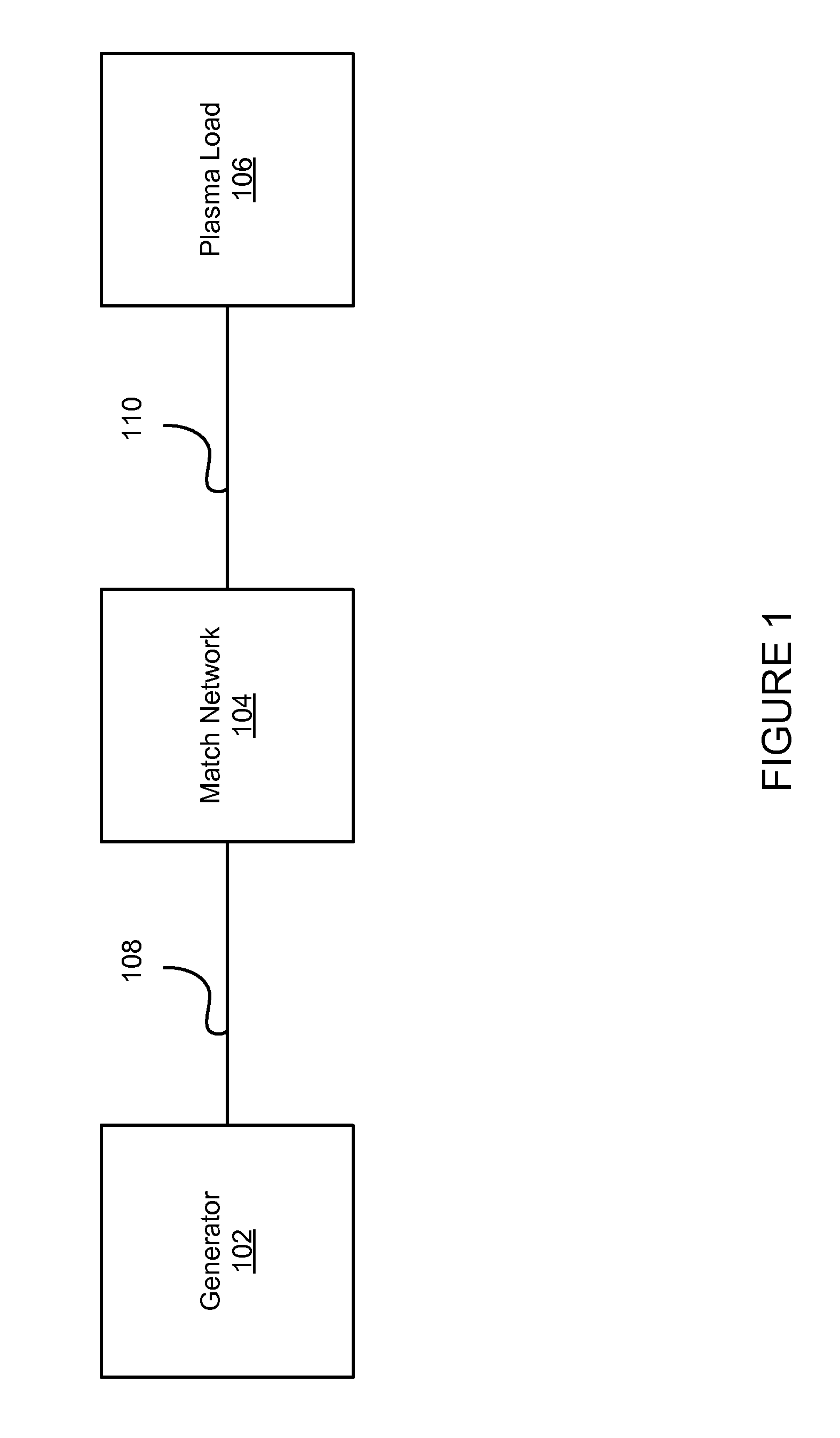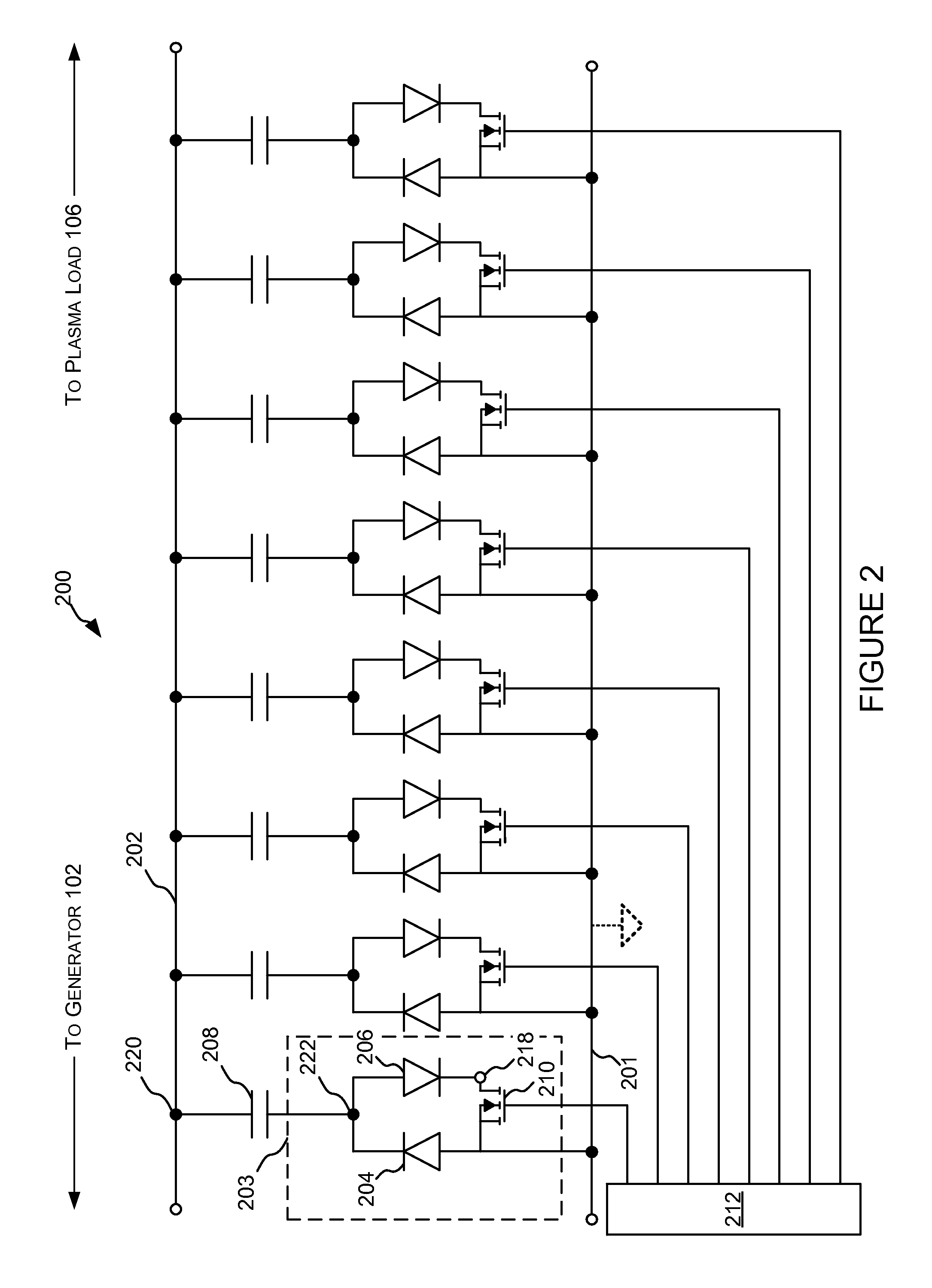High frequency solid state switching for impedance matching
a solid-state switching and high-frequency technology, applied in the field of plasma processing, can solve the problems of resistive elements in the match network, bulky and expensive, pin diodes can be too slow for rf power applications, etc., and achieve the effect of reducing susceptibility and reducing curren
- Summary
- Abstract
- Description
- Claims
- Application Information
AI Technical Summary
Benefits of technology
Problems solved by technology
Method used
Image
Examples
Embodiment Construction
[0022]The present disclosure relates generally to plasma processing. More specifically, but without limitation, the present disclosure relates to match networks of a power supply for generating and sustaining a plasma in, or provided to, a plasma processing chamber.
[0023]FIG. 1 is a circuit diagram of a plasma processing system according to one embodiment of this invention. A generator 102 transmits RF power to a match network 104 (“match”) via a transmission line 108 (e.g., coaxial cable) and then onto a plasma load 106 via an electrical connection 110. The match network 104 varies its internal electrical elements such that the input impedance of the match network 104 is close to the desired input impedance.
[0024]The match 104 can include two or more variable capacitance elements coupled in parallel. Often such variable capacitance elements can be mechanically-varied capacitors, which, as described above, are bulky, slow, and expensive. In the alternative, variable capacitive eleme...
PUM
 Login to View More
Login to View More Abstract
Description
Claims
Application Information
 Login to View More
Login to View More - R&D
- Intellectual Property
- Life Sciences
- Materials
- Tech Scout
- Unparalleled Data Quality
- Higher Quality Content
- 60% Fewer Hallucinations
Browse by: Latest US Patents, China's latest patents, Technical Efficacy Thesaurus, Application Domain, Technology Topic, Popular Technical Reports.
© 2025 PatSnap. All rights reserved.Legal|Privacy policy|Modern Slavery Act Transparency Statement|Sitemap|About US| Contact US: help@patsnap.com



